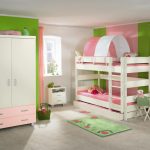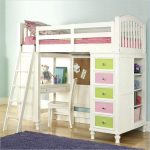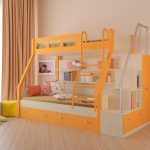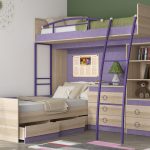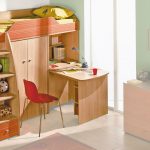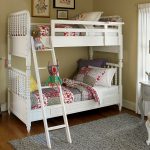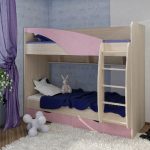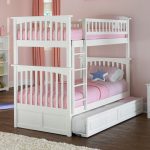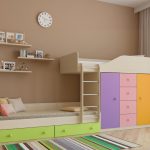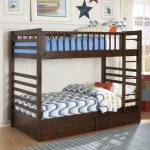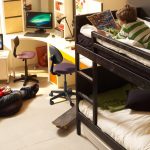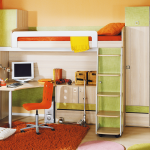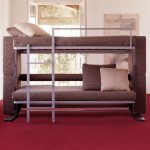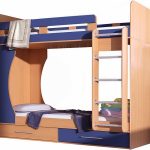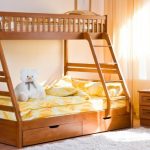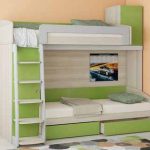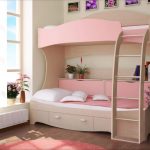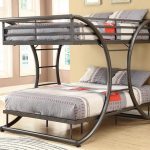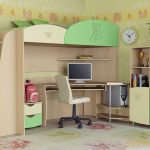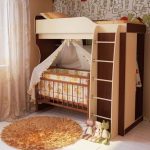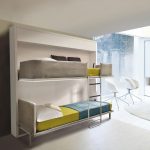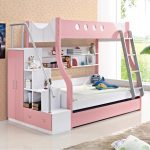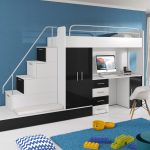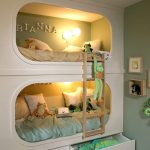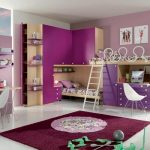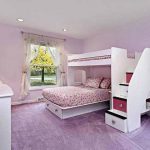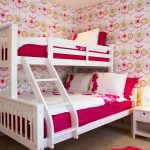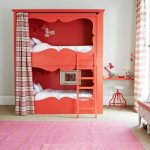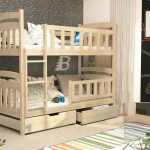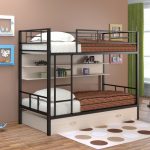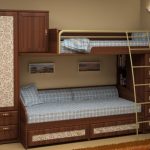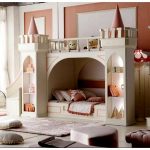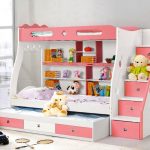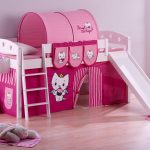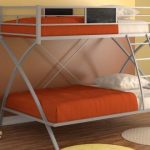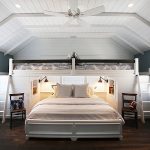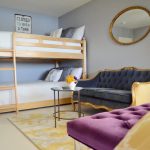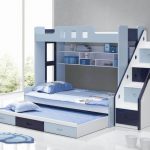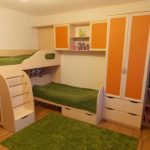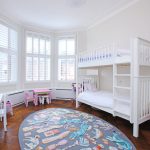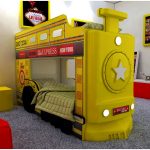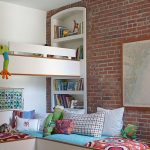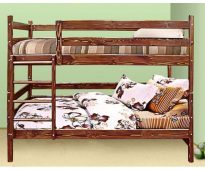 Bunk beds for teens. Advantages and disadvantages
Bunk beds for teens. Advantages and disadvantages
Features, pros and cons of bunk beds for children

Wooden bed with drawers and a chest of drawers for two children
Most parents want to make room for children not only safe, but also interesting. There are all possibilities for this today. Furniture manufacturers offer such a number of models that you can choose the right one for any style and age. In the conditions of shortage of square meters, preference is often given to bunk beds, which are optimal in terms of price, quality and design.
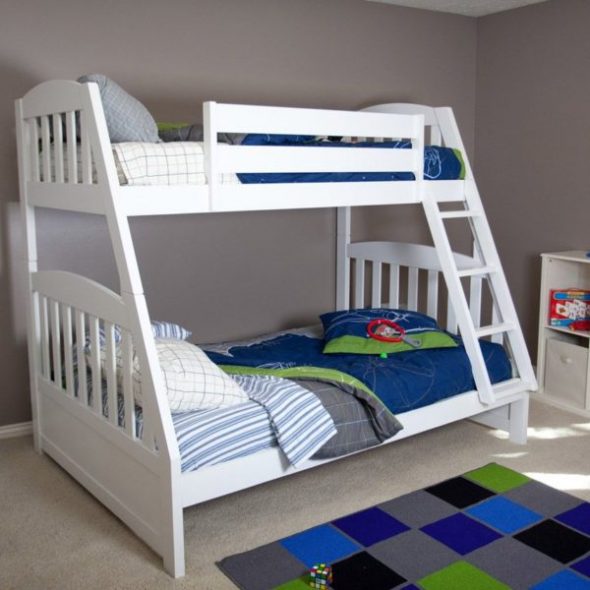
Wooden bed with different widths of beds designed for sleeping children of different ages
The main features of the use of two-level structures are:
- compactness;
- accommodation in any part of the room;
- variability of use (not only as a sleeping area for children, but as a playing or working space);
- combining several areas at once (sleeping, working, playing), which greatly simplifies the problem of zoning.
The advantages of a bunk bed are much greater than the disadvantages.
- It perfectly optimizes space, saves square meters.
- This is additional entertainment. For children, it turns into a ship, a fortress or some other attribute. It is easy to build a hut or an attic with her, where you can have fun.
- Creates comfort in the interior. Today, furniture stores offer non-standard, creative models that will make any nursery fun and bright.
- Functionality. Built-in cabinets and drawers add convenience during operation.
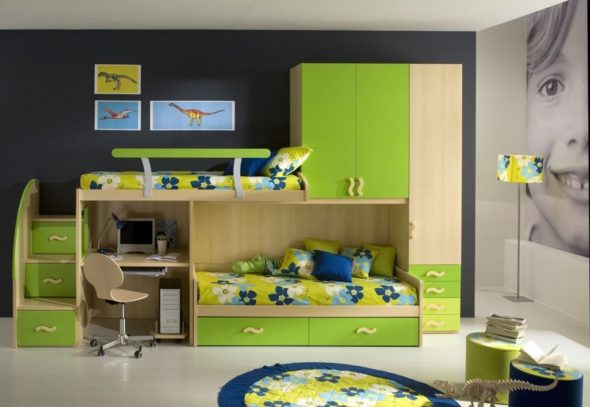
Multi-level bunk bed with a built-in wardrobe and work space
Among the shortcomings of such furniture are the fear of heights in children. Parents are also worried about the risk of falling and serious injury. Among other disadvantages is the inability to read a child a fairy tale before bedtime, lying next to each other. If there are two children, then there may be constant quarrels over the top or bottom place. It is also undesirable to sleep on the upper tier suffering from diseases of the respiratory system.
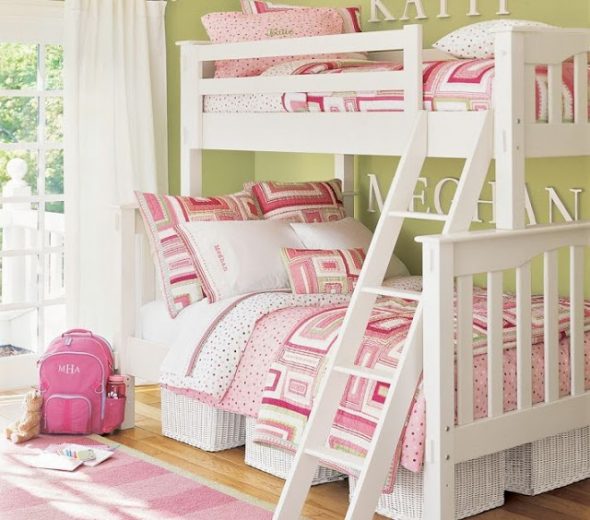
Wooden white bunk bed in a room for girls
Content
- 1 Types of bunk beds
- 2 How to choose the desired option
- 3 Choice of dimensions
- 4 What should be the style of the nursery
- 5 Innovative design and application of smart systems
- 6 Video: Children's bunk beds. Examples of design and design solutions
- 7 50 best options for beautiful and comfortable bunk beds for children:
Types of bunk beds
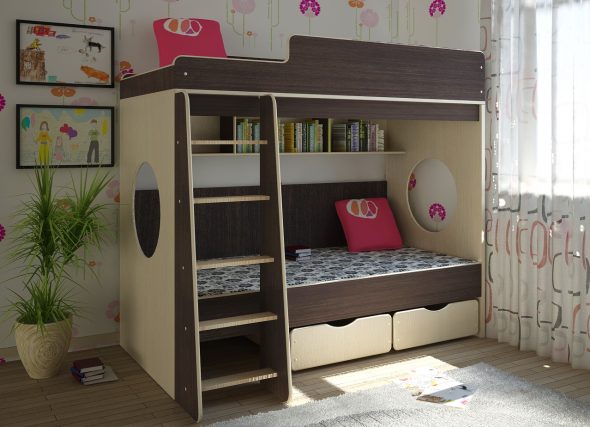
Comfortable and safe bed for two children with sloping stairs, shelves and drawers
Bunk beds vary according to several criteria:
- number of beds;
- design;
- the form;
- additional functions;
- material.
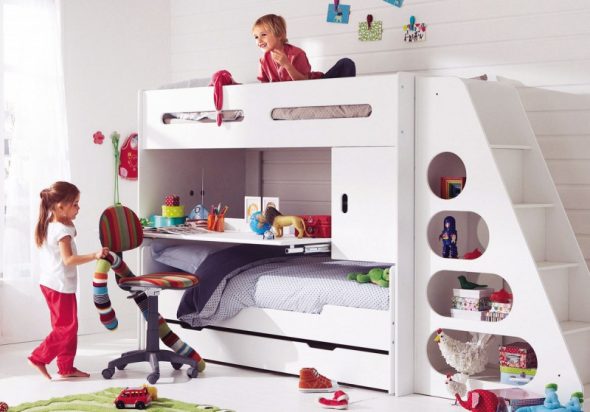
Beautiful and functional transforming bed with three beds and a table
In a small apartment, where one child is not only for one child, a standard bunk bed with two beds, located one above the other, would be preferable. In single bunk beds, the lower or upper tier is transformed into a playing, training corner. If the nursery is designed for two children, and the area of the room allows, then you can build two beds at once. Each child in this case will have its own place to sleep and its own play or study area.
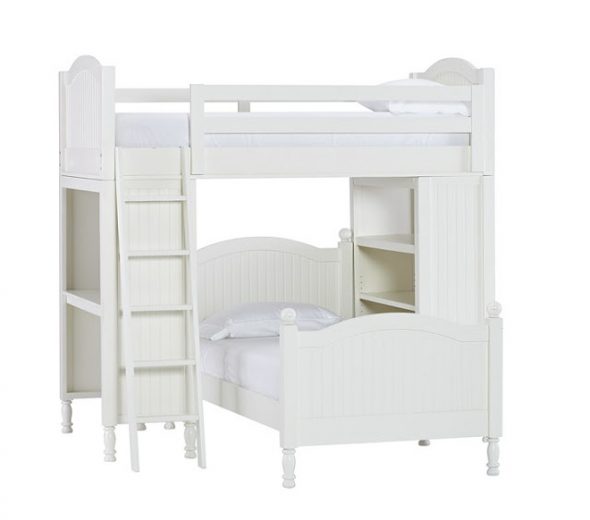
White bed in two tiers, angled
According to the design of the bed are divided into:
- classic;
- corner;
- retractable.
In the classic version, the top and bottom are clearly located under each other.
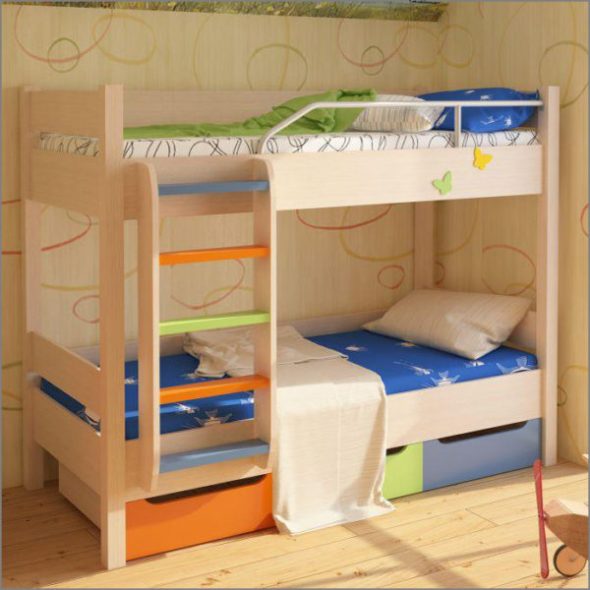
Classic bunk bed suitable for two children
In the corner versions, the tiers can be constructed perpendicular to each other or can be rotated at a certain angle.
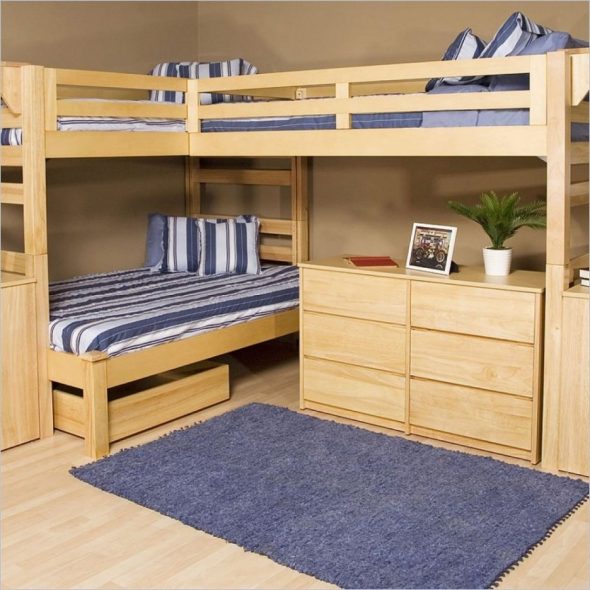
Corner bunk bed with three berths
In sliding models, the lower part is attached to the top and, if necessary, just rolls out. Such products are made on the principle of matryoshka.
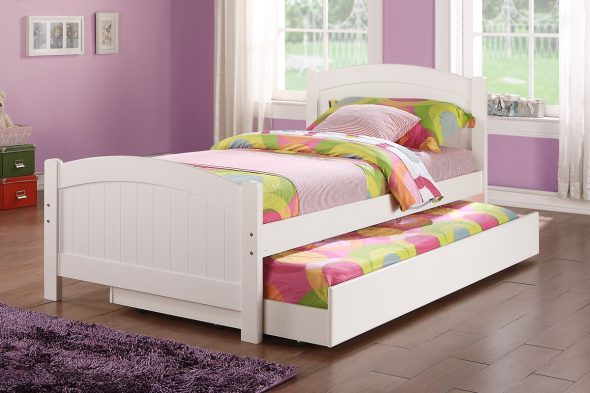
Compact retractable bed when folded takes place as one bed and has no dangerous stairs for kids
In a form distinguish:
- straight;
- angular.
Straight, rectangular can be located in any part of the room. Corner, complex models are specially made for installation in the corner of the room.
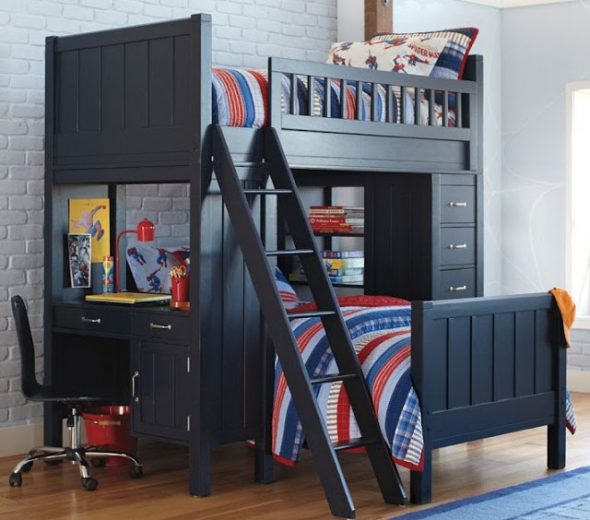
Bunk bed made of wood with built-in work space and shelves for storage
Additional features in bunk beds - a great solution for small children, where you need to save every square meter. Beds can be additionally equipped with:
- drawers for storing bed linen, toys, things;
- study area. As a rule, it is a table with a desk lamp, a chair and a rack for storing school supplies;
- sports equipment.
- play area. This may be a hut on the lower tier or on the top, a house for dolls, a garage for cars, etc.
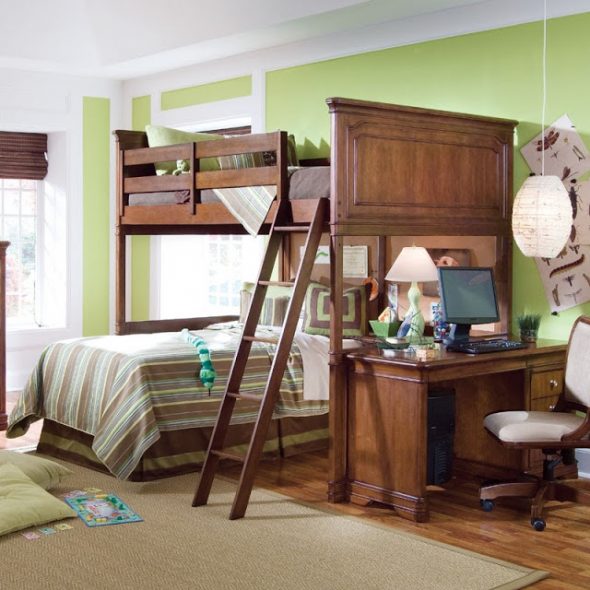
A modular composition consisting of individual items: a loft bed, a lower bed and a writing desk
Material for a bunk bed can be next.
- Natural wood (array). Oak, ash and beech beds are environmentally friendly, durable and durable, but the price is not available to everyone. They are not practical for small rooms, because quite cumbersome.
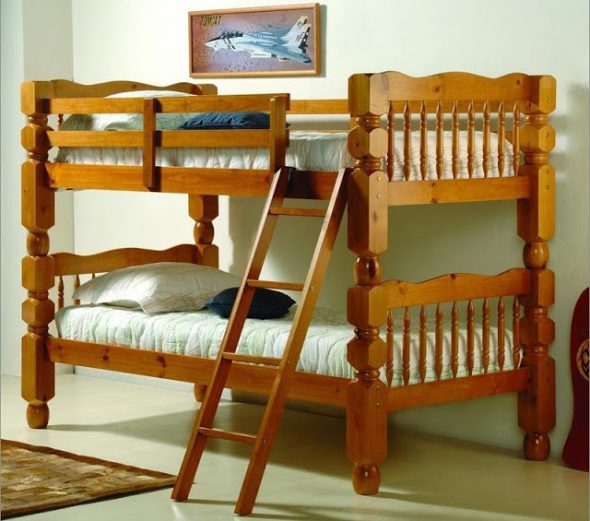
Classic bunk bed in solid wood
- Chipboard, MDF. This is the most popular option, as it meets the optimal ratio of price and quality. The service life of furniture made from such material is significantly less than that of a natural fellow. Manufacturers may also have different plate density, which affects strength. The bed made of MDF or chipboard is not suitable for rooms with high humidity, because quickly becomes loose and collapses.
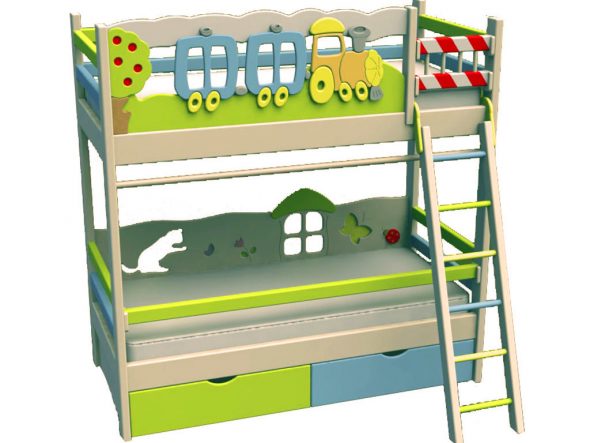
Beautiful baby bed made of MDF with funny pictures
- Metal. High price and non-universality scare away, but in fact this option is the most durable. Over time, it can only lose its attractiveness in appearance, which is easy to fix if the paint is updated in time. When buying, pay attention to the slippery surface. If there is no special anti-slip coating and no additional fasteners, then it is better to abandon this model.

Vintage metal bed in two tiers
How to choose the desired option
When choosing a bunk bed for children, you need to be guided by the following parameters.
- Ceiling height. For high ceilings (more than 2.5 m.) Problems with the choice will not arise. For low suitable only certain types of designs.
- Security. It is due to the strength, reliability of fasteners, quality of the material, its environmental friendliness. You should make sure that the bed is equipped with bumpers. The ladder should be comfortable for the child, have a railing. All parts must be firmly fixed.
- Comfort. This concept includes the size of the bed, the distance between tiers, the characteristics of the mattress.
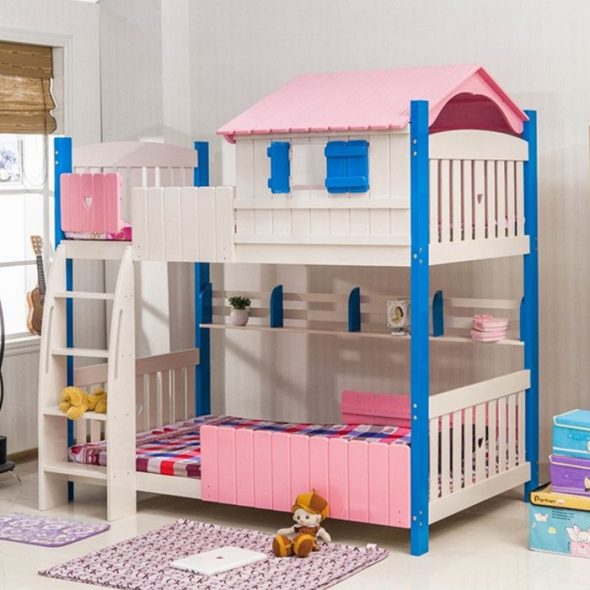
Low bunk bed with a house and protective fencing for preschoolers
Size is selected based on age. The berth 1500х70 cm is intended for the smallest, preschool children. For teens 11 - 15 years old, sizes 80x1900 cm. For high school students, choose with parameters 90x2000 cm. It is always better to take dimensions for growth.It will also be appropriate if the bed is needed for children with a large age difference.
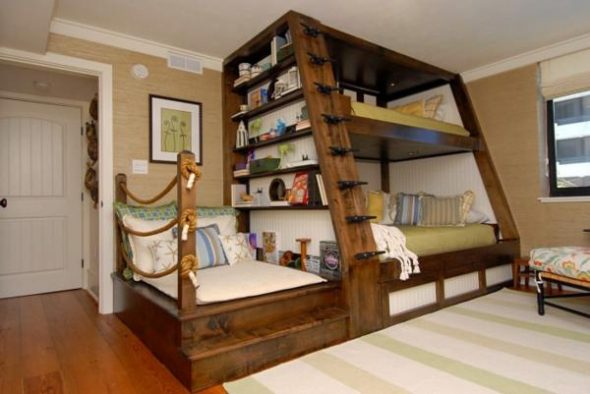
Large bunk bed for teens with a separate place for guests
The distance between the tiers should be such that from the head sitting on the lower floor to the upper part was at least 30 cm.
Mattresses are usually sold separately, which has its advantages, because You can choose the right option for the child. For healthy children need an anatomical mattress. For those who have problems with the locomotor system - orthopedic. It is recommended to give preference to the lamellar basis since it is more hygienic.
- The quality of the material. It is useful to read reviews about a particular manufacturer on the Internet before buying.
- Design. Color, shape should correspond to the overall style decision of the room.
- Functionality. If the room is small (12 sq. M. And less), then it makes sense to look at models that have additional options (storage, sports area, etc.)
Choice of dimensions

Compact bunk bed in white
Not all bunk beds are suitable for a small room or a room with low ceilings. Properly placed bed leaves the distance from the second tier to the ceiling of at least 90 cm. If you can not comfortably install the standard model, then give preference to sliding items-matryoshkam.
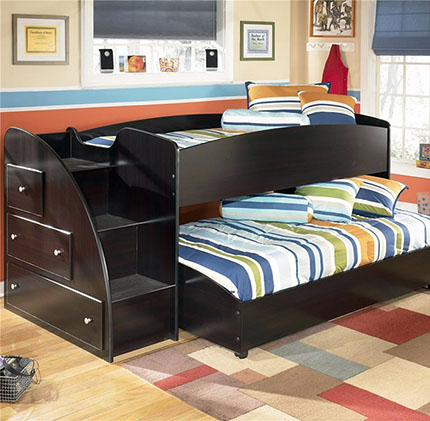
A retractable bed for two children allows you to place two beds in the nursery, regardless of the height of the ceiling.
In a large room, a corner-shaped bed will harmoniously look. The large square also allows you to accommodate two bunk, single beds.
For small rooms, straight, angular in shape and classic, retractable models will be practical.
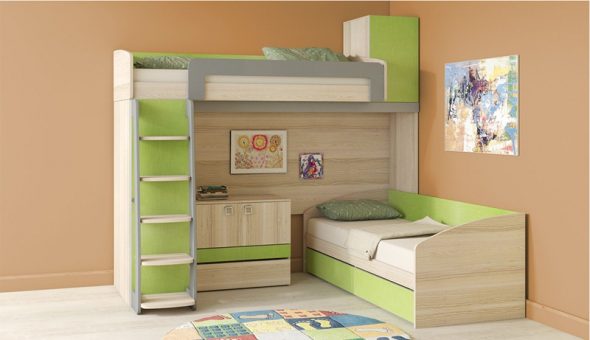
Corner children's bunk bed to save space
What should be the style of the nursery
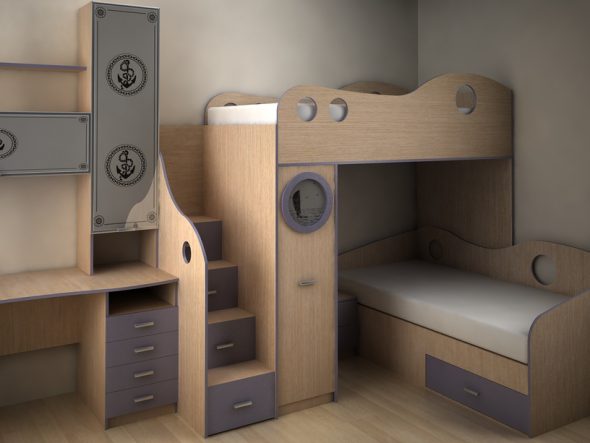
A set of furniture for the children's room, decorated in a nautical style.
The two-level bed is almost universal. You can choose a suitable model for a nursery, both in a modern and in a classic style. For a classic interior fit a bed made of solid wood (natural wood). A product made of MDF or chipboard is suitable for almost any design, because With this material, you can make almost any model in shape, color and design. The metal bed will perfectly fit into modern styles: loft, industrial, minimalism, hi-tech, etc.
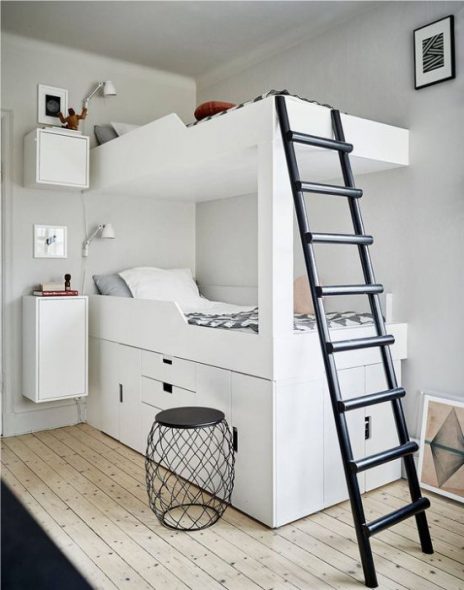
Bunk bed in hi-tech room interior
Innovative design and application of smart systems
In order to increase the functionality of the room and optimize the space, there are models with:
- built-in wardrobes, storage boxes;
- built-in tables and racks for the equipment of the study area and the placement of school supplies;
- a sofa as another place for a daytime rest.
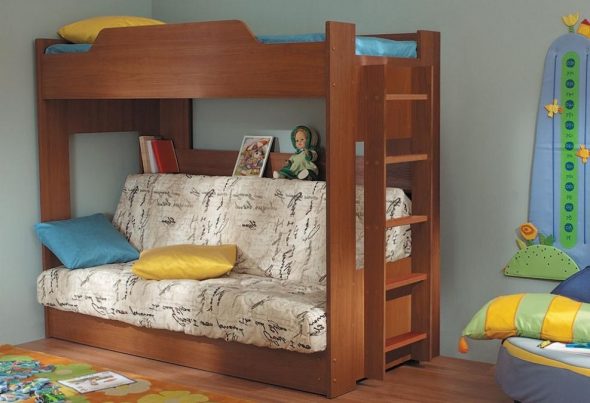
Sofa on the first tier of the bunk bed
The use of folding, sliding mechanisms greatly increases the possibility of using such furniture.
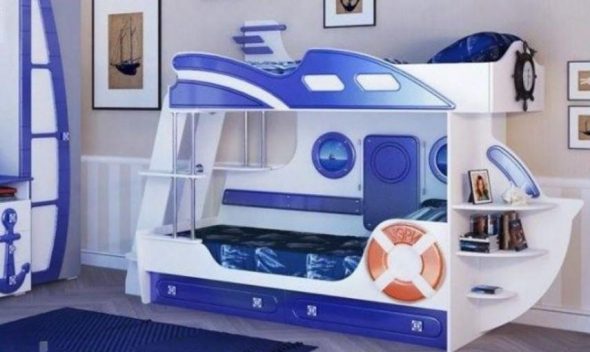
Unusual bunk bed, decorated in a maritime theme
A rational solution is the equipment of such a multi-level construction of a sports town and a gaming area. Slides, ropes, ladders are essential elements of an active child. They make the pastime not only interesting, but also useful.
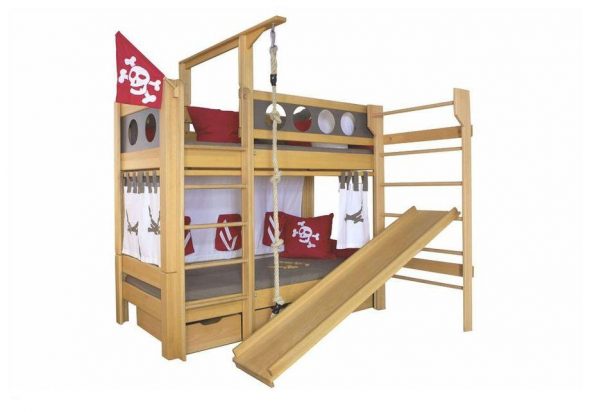
Bunk bed for two boys “Pirate” with a sports corner
Video: Children's bunk beds. Examples of design and design solutions
50 best options for beautiful and comfortable bunk beds for children:
 Bunk beds for teens. Advantages and disadvantages
Bunk beds for teens. Advantages and disadvantages
 Proper crib - an invaluable contribution to the future of the child
Proper crib - an invaluable contribution to the future of the child
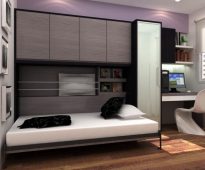 The advantages of making closet beds do it yourself
The advantages of making closet beds do it yourself
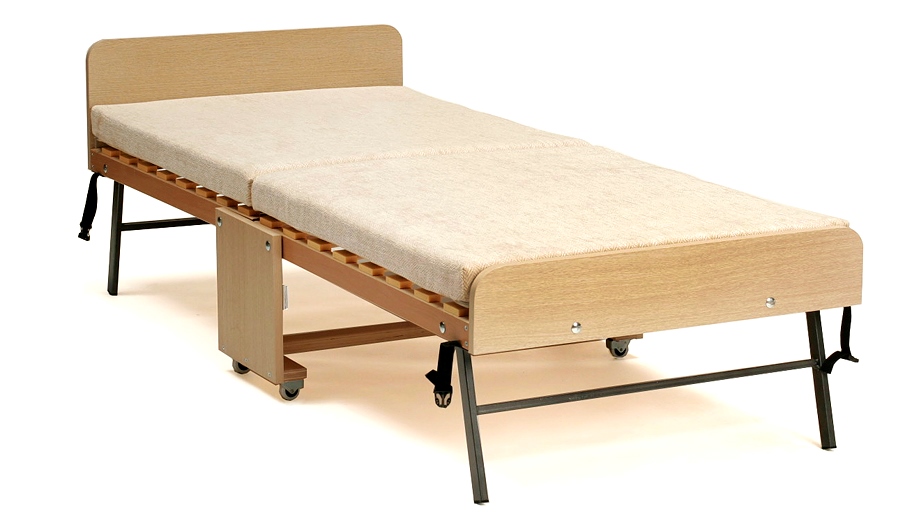 Rollaway bed with a mattress - advantages and disadvantages
Rollaway bed with a mattress - advantages and disadvantages
 Children's bed-car for the children's room.
Children's bed-car for the children's room.
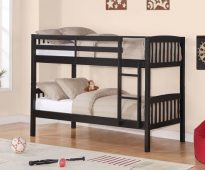 Choosing beds for children: what is the first thing to look at?
Choosing beds for children: what is the first thing to look at?


